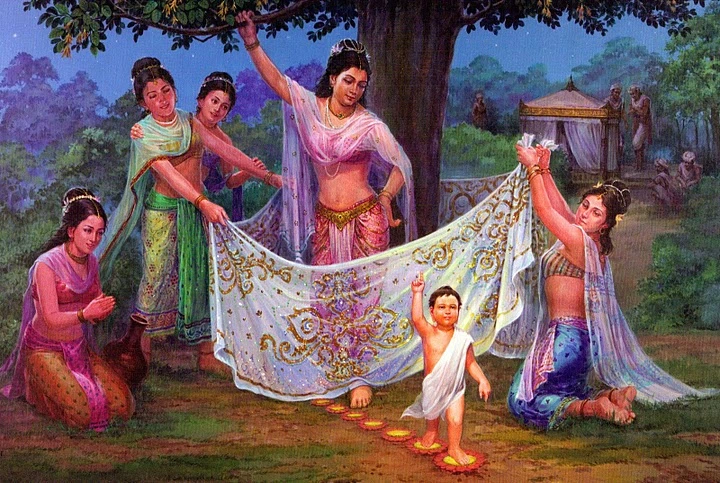The celebration of the Buddha’s birth is indeed an important event in many Buddhist traditions, including those in Japan. In Japan, this celebration is known as “Hanamatsuri” or “Flower Festival.” It typically takes place on April 8th, although the date may vary depending on the tradition or region.
During Hanamatsuri, Buddhists commemorate the birth of Siddhartha Gautama, who later became known as the Buddha, meaning the “Awakened One” or the “Enlightened One.” According to tradition, Siddhartha was born in Lumbini, in present-day Nepal, around the 6th to 4th century BCE.
In Japan, celebrations often involve decorating temples and shrines with flowers, particularly cherry blossoms, and setting up a small altar with an image of the baby Buddha surrounded by flowers. Devotees pour sweet tea or water over the statue of the baby Buddha, symbolizing the sweet rain that fell when he was born.
Hanamatsuri is also an occasion for teachings and ceremonies at Buddhist temples, where practitioners come together to reflect on the Buddha’s life and teachings. It’s a time for gratitude, reflection, and renewal of one’s commitment to the Buddhist path.
Overall, Hanamatsuri is a joyous occasion in Japan, marked by reverence and celebration of the Buddha’s birth and his profound impact on the world through his teachings of compassion, wisdom, and liberation from suffering.
Eid al-Fitr, often referred to simply as Eid, is indeed a significant festival in the Islamic calendar, marking the end of Ramadan, the month of fasting. Muslims around the world eagerly anticipate this celebration, which is characterized by joyous gatherings, prayers, feasting, and acts of charity.
The process of determining the exact date of Eid al-Fitr revolves around the sighting of the crescent moon, which marks the beginning of the month of Shawwal, following Ramadan. Due to the lunar calendar’s nature, the exact date can vary from one region to another. In some countries, such as Saudi Arabia, the official announcement is made based on moon sightings, while others may follow different criteria or rely on centralized authorities for the declaration.
The anticipation for Eid often builds up during the final days of Ramadan, with communities eagerly awaiting the announcement of the new moon. Once the moon has been sighted and the start of Shawwal confirmed, Muslims gather for special prayers known as the Eid prayer. These prayers usually take place shortly after dawn in mosques, outdoor spaces, or designated prayer grounds.
After the prayers, families and friends come together to exchange greetings, share meals, and engage in festive activities. It’s a time for joy, gratitude, and reflection, as Muslims celebrate the completion of their spiritual journey during Ramadan and reaffirm their commitment to faith and community.
Eid al-Fitr is also marked by acts of charity and generosity, with Muslims encouraged to give to those in need, ensuring that everyone can partake in the festivities and experience the joy of the occasion.
Overall, Eid al-Fitr is a time of celebration, unity, and renewal for Muslims worldwide, symbolizing the culmination of Ramadan’s spiritual discipline and the beginning of a new chapter filled with hope, blessings, and goodwill.

